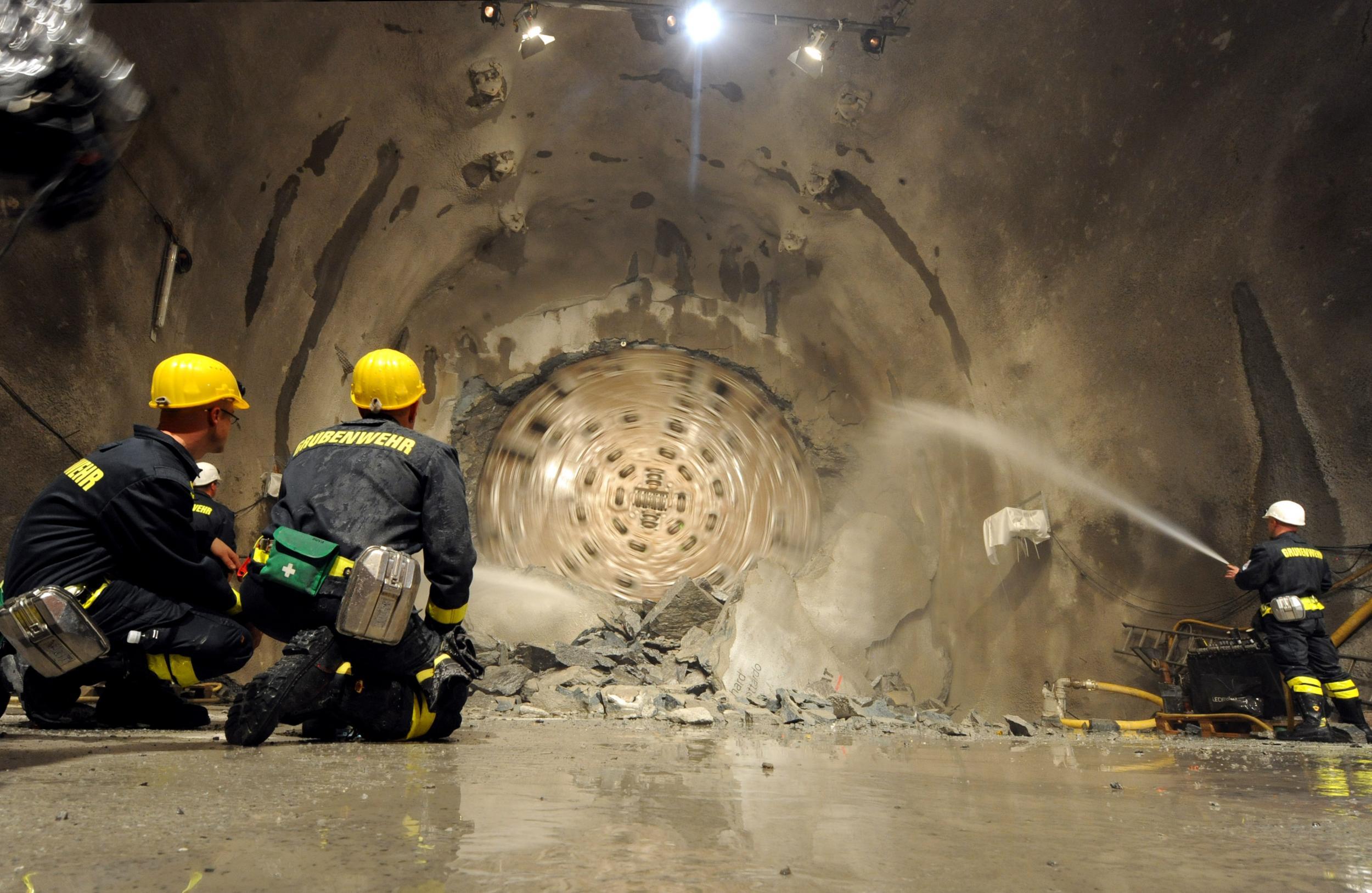Why the longest train tunnel in the world is a double-edged sword
Work on the world's longest railway tunnel has just been completed, drilling through the base of the Alp to accelerate journeys from Zurich to Milan. But, says Simon Calder, this new addition subtracts from the aesthetic experience

“Switzerland through and through” – that’s the slogan applied by Swiss Railways to its shiny new addition to the network. The organisation has just completed the longest railway tunnel in the world.
The Gotthard Base Tunnel is designed to flatten the mountainous nation, at least in the transportation sense.
The existing trans-Alpine line between Zurich and Lugano, in Italian-speaking Switzerland, is impressive enough as a piece of engineering. It winds high into the mountains, and when it has reached around three-quarters of a mile above sea level, it drills through the mountains with a nine-mile tunnel.
The base tunnel does what it says: cuts through the base of the Alps, which as you will appreciate requires a rather longer bore. At 35 miles, it’s a couple of miles longer than the previous title-holder, the Seikan Tunnel in Japan (our own dear Channel Tunnel is a mere 31.4 miles long).
Work on the link began at the end of the last century, and was completed this summer. Between now and the start of the new rail timetables in December, tests are being carried out. But from 11 December, trains between Zurich and Milan will be nearly half-an-hour faster – which will be of great benefit to business travellers. Or will it?
The trade-off between the speed of air travel and the convenience of rail is a complex one. Each business traveller has his or her own preferences about the parameters of the time-saving by plane, the hassle of getting to and through the airport, and the potential productivity of the train.
At present the fastest journey from the commercial hubs of Switzerland and Italy takes four hours by train, but under an hour by air. Swiss Railways is betting that the accelerated rail trip will persuade more business travellers to switch from air. No doubt some will be lured – in just the same way that Eurostar hopes to grab a much larger slice of the lucrative London-Amsterdam market once direct services begin in 2017. Yet I think there may be a few travellers going in the other direction. They are the people who regard looking out of the window as a benefit of travel – whether from a train speeding through spectacular scenery, or an aircraft soaring above Europe’s highest mountain range.
It’s been a few years since I took the train south through the Alps, from Zurich to Lugano and onwards to Milan. Besides the memorable mountain scenery, my chief recollection is of an elderly lady demanding that I stop working on my laptop because the electro-magnetic radiation was causing her problems.
I wonder how she is faring these days now that every traveller has an arsenal of electronic devices?
Business travel is popularly represented as a chore, but it actually bestows many aesthetic opportunities to enjoy a view of the planet: from the beautiful Borders coast between Newcastle and Edinburgh to the ice cap of Greenland and Canada’s Arctic islands on a flight from Heathrow to Vancouver. No doubt employers would rather their travelling staff were busily working on their laptops, producing clouds of electro-magnetism.
Yet in return for gruelling, anti-social schedules, gazing at the world beyond the window is as much of a benefit as frequent-flyer points – and intellectually more stimulating.
Mark Smith, the international rail guru who runs the seat61.com website, agrees. He says he regards the Gotthard Base Tunnel “as a very double-edged sword indeed”.
“Putting the most scenic part of the most scenic mainline route through the Alps into a hole to save half an hour? I'd rather take the extra 30 minutes.”
It will still be possible to go “over the top”, using local trains. But as Mr Smith says, “It will mean paying more [expensive Swiss domestic full-flex fares versus a yield-managed dynamic Zurich-Milan fare from €9 upwards] and changing trains. And all that to experience something that used to come as standard with every journey to Italy.”
Subscribe to Independent Premium to bookmark this article
Want to bookmark your favourite articles and stories to read or reference later? Start your Independent Premium subscription today.

Join our commenting forum
Join thought-provoking conversations, follow other Independent readers and see their replies